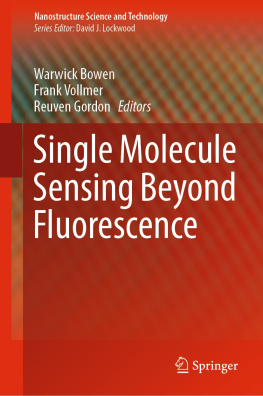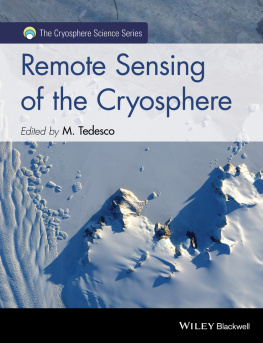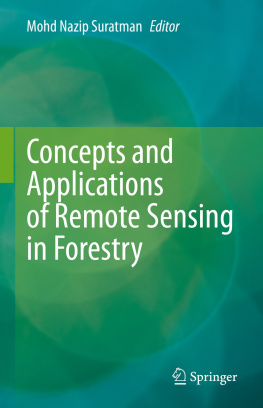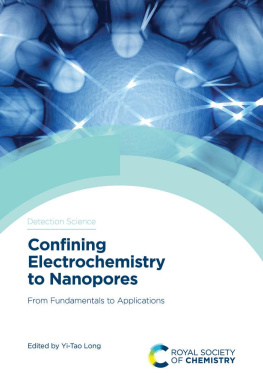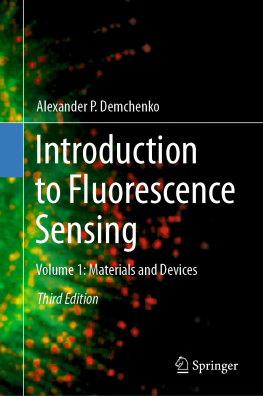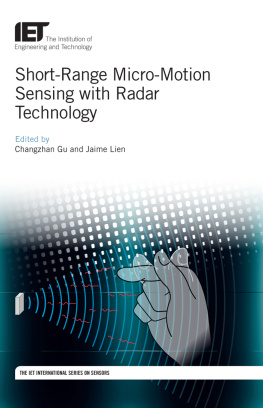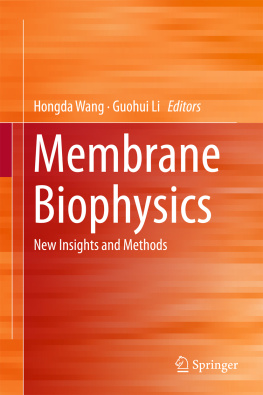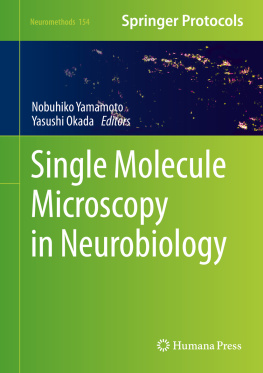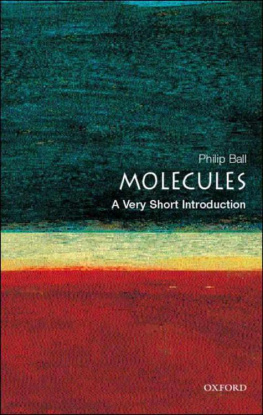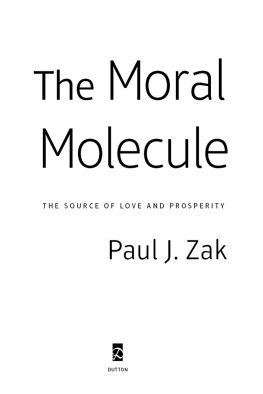Nanostructure Science and Technology
Series Editor
David J. Lockwood
FRSC, National Research Council of Canada, Ottawa, ON, Canada
Nanostructure science and technology now forms a common thread that runs through all physical and materials sciences and is emerging in industrial applications as nanotechnology. The breadth of the subject material is demonstrated by the fact that it covers and intertwines many of the traditional areas of physics, chemistry, biology, and medicine. Within each main topic in this field there can be many subfields. For example, the electrical properties of nanostructured materials is a topic that can cover electron transport in semiconductor quantum dots, self-assembled molecular nanostructures, carbon nanotubes, chemically tailored hybrid magnetic-semiconductor nanostructures, colloidal quantum dots, nanostructured superconductors, nanocrystalline electronic junctions, etc. Obviously, no one book can cope with such a diversity of subject matter. The nanostructured material system is, however, of increasing significance in our technology-dominated economy and this suggests the need for a series of books to cover recent developments.
The scope of the series is designed to cover as much of the subject matter as possible from physics and chemistry to biology and medicine, and from basic science to applications. At present, the most significant subject areas are concentrated in basic science and mainly within physics and chemistry, but as time goes by more importance will inevitably be given to subjects in applied science and will also include biology and medicine. The series will naturally accommodate this flow of developments in the sciences and technology of nanostructures and maintain its topicality by virtue of its broad emphasis. It is important that emerging areas in the biological and medical sciences, for example, not be ignored as, despite their diversity, developments in this field are often interlinked. The series will maintain the required cohesiveness from a judicious mix of edited volumes and monographs that while covering subfields in depth will also contain more general and interdisciplinary texts.
Thus the series is planned to cover in a coherent fashion the developments in basic research from the distinct viewpoints of physics, chemistry, biology, and materials science and also the engineering technologies emerging from this research. Each volume will also reflect this flow from science to technology. As time goes by, the earlier series volumes will then serve as reference texts to subsequent volumes.
More information about this series at https://link.springer.com/bookseries/6331
Editors
Warwick Bowen , Frank Vollmer and Reuven Gordon
Single Molecule Sensing Beyond Fluorescence

Logo of the publisher
Editors
Warwick Bowen
School of Mathematics and Physics, University of Queensland, Brisbane, QLD, Australia
Frank Vollmer
Department of Physics and Astronomy, University of Exeter, Exeter, UK
Reuven Gordon
Department of Computer and Electrical Engineering, University of Victoria, Victoria, BC, Canada
ISSN 1571-5744 e-ISSN 2197-7976
Nanostructure Science and Technology
ISBN 978-3-030-90338-1 e-ISBN 978-3-030-90339-8
https://doi.org/10.1007/978-3-030-90339-8
The Editor(s) (if applicable) and The Author(s), under exclusive license to Springer Nature Switzerland AG 2022
This work is subject to copyright. All rights are solely and exclusively licensed by the Publisher, whether the whole or part of the material is concerned, specifically the rights of translation, reprinting, reuse of illustrations, recitation, broadcasting, reproduction on microfilms or in any other physical way, and transmission or information storage and retrieval, electronic adaptation, computer software, or by similar or dissimilar methodology now known or hereafter developed.
The use of general descriptive names, registered names, trademarks, service marks, etc. in this publication does not imply, even in the absence of a specific statement, that such names are exempt from the relevant protective laws and regulations and therefore free for general use.
The publisher, the authors and the editors are safe to assume that the advice and information in this book are believed to be true and accurate at the date of publication. Neither the publisher nor the authors or the editors give a warranty, expressed or implied, with respect to the material contained herein or for any errors or omissions that may have been made. The publisher remains neutral with regard to jurisdictional claims in published maps and institutional affiliations.
This Springer imprint is published by the registered company Springer Nature Switzerland AG
The registered company address is: Gewerbestrasse 11, 6330 Cham, Switzerland
Preface
The importance of biomolecules can hardly be overstated. They are the fundamental building blocks of life, driving active processes in cells ranging from gene transcription to catalysis and cell division. To understand a biomolecule is to understand its structure, its dynamics, and how it interacts with its environment. However, because biomolecules generally consist of many thousands of atoms and interact with complex environments, ab initio models are fraught with uncertainty. As such, direct measurements of single-molecule behaviours are vital. In the midst of the COVID19 pandemic this importance has perhaps never been more evident, with the behaviour of spike proteins on the virus surface playing a key role in both the function of the virus and the development of targeted vaccines.
Experimental methods to resolve single-molecule dynamics are faced with the challenge of size-scales. Biomolecules tend to be small, of size below a few nanometers, and are therefore difficult to observe. For many decades, the primary approach to overcome this challenge has been to attach bright fluorescent labels to the molecule, which act like a beacon lighting the molecule up. This has proved tremendously successful, as illustrated by the award of the 2014 Nobel Prize in Chemistry. However, fluorescent techniques have significant drawbacks. The label can alter both the physical and chemical environment of the molecule, changing its behaviour. The fluorescence can bleach, blink or quench, degrading the measurement and limiting the time over which it can be made. This motivates the development of alternative techniques that do not rely on labels and can therefore go beyond the capabilities of fluorescence. Techniques to sense and visualise molecules are particularly important in biology where movements of motor proteins and conformational (shape) changes of enzymes occur on length and timescales often difficult to access with fluorescence measurement techniques.
The past decade has seen an explosion of activity in unlabelled single-molecule biosensing. The purpose of this book is to provide an overview of this activity, current capabilities, and future possibilities. It is a particularly exciting time for such a book. Sensor systems have started to emerge that enable the detection of molecules even down to small organic molecules and single atomic ions. The emerging sensor systems often use interferometry to probe complex biomolecules such as nanoscale proteins with exceedingly high sensitivity. Some sensors enable the detection of microsecond molecular dynamics such as the conformational (shape) changes of enzymes; others measure current changes when a single DNA strand passes through a synthetic or protein nanopore. These electrical sensor signals can resolve the DNA sequence down to single nucleotides. The making of molecular movies is starting to become a reality, by operating optical and electrical sensors at their ultimate (fundamental) detection limits, and by utilising multiple detection channels to access the biomolecular information. Exquisitely precise tools to manipulate molecules using electrical and optical forces are also being developed, providing the means to deliver molecules to the sensor, to control their position and orientation while sensing and, thereby, to gain a great deal more information about them.

